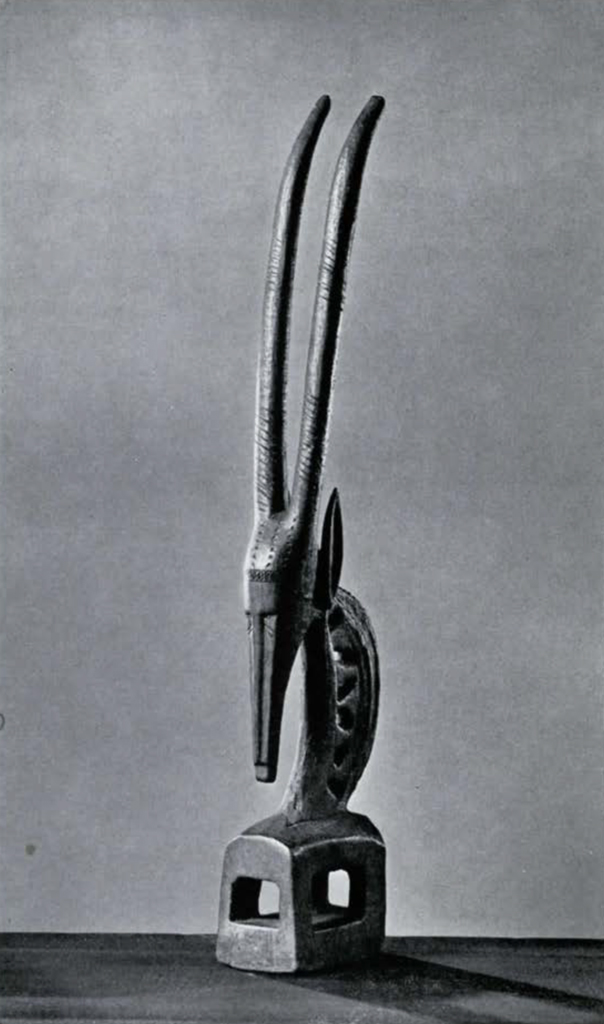AFRICA was the last continent to be drawn into the orbit of European interest. Less than a hundred years ago the interior of this great continent was almost completely unknown. It was only in the second half of the last century that we learned about the existence of the mighty Congo, of the great lakes and high mountains. Even in the first years of our century, an explorer could claim the dubious honor of being the first white man to visit this or that region. Once interest had been awakened, the geographical exploration of the continent proceeded with breath-taking speed, and within fifty years the task was accomplished. The white man had visited the most remote corners of the continent, not only geographically but politically as well. At the turn of the century Africa had been subdivided among the major European powers, and European institutions began their penetration of this new world.

Museum Object Number: 29-12-125
Image Number: 4956
The study of Africa’s inhabitants did not keep step with this rapid geographical and political exploration. The study of human beings and their culture and institutions is not accomplished as easily as the recording of the courses of rivers, the altitude of mountains, or the thickness of gold-bearing quartz riffs. Investigation of human groups requires intimate familiarity with the people as well as knowledge of those techniques which were not developed by anthropologists until after the turn of the century. Thus it is not surprising that reliable information concerning African peoples was not available before. Occasionally early explorers and missionaries have given remarkable accounts of Africa’s native population, accounts which ore particularly valuable since they portray the African in his life prior to European contact, a result which few anthropological studies were able to achieve. But these early accounts lack that detachment which we like to see employed today. Explorers as well as missionaries had their specific points of view. There were those who regarded Africans as a priori inferior, as only worthy to be traded into slavery. Others, perhaps influenced by Rousseau’s philosophy, were inclined to idealize the “noble primitive,” while still others saw in the African only the heathen who had to be saved from damnation, and only a few attempted to see the African as he really is. These varying descriptions and evaluations of African peoples and their institutions are responsible for the numerous erroneous notions which are still held by many in the western world. Childishness, inferiority, witchcraft, cannibalism, worship of trees, sexual licentiousness, and laziness are some of the characteristics popularly attributed to the Africans. Film, radio, press, and many popular writers of our decade have repeated these cliches and thus have helped to perpetuate them in spite of numerous anthropological accounts to the contrary.
African cultures are not doomed as are those of the North American Indians. Although Europe is making vast inroads and has effected great cultural changes, 150,000,000 Negroes who have their own traditions, language, and political consciousness are destined to remain African in culture. The proper understanding of the cultural background of Africa’s inhabitants, therefore, has practical as well as scientific significance.
Within this study we have not followed the geographer’s conception of Africa, but we have eliminated the Africa north of the Sahara and have directed our emphasis to that part of the continent inhabited by Negroes. In Part I, dealing with Africa’s history, it will be necessary, however, to refer occasionally to the northern section of the continent. Egypt and Nubia as well as Abyssinia have cultures which require the attention of regional specialists, and the Mediterranean littoral presents problems which require the knowledge of those familiar with modern Arabic cultures.

